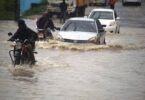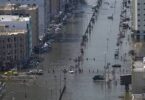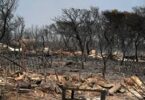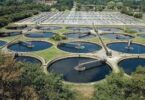Rachel Frazin
Hurricane Fiona’s impact on Puerto Rico is drawing renewed attention to the territory’s embattled power system.
The storm left millions of Puerto Ricans without power for several days, and as of Friday hundreds of thousands of people were still without power.
Puerto Rico’s power problems have been compounded by an electric grid that has not been fully rebuilt after the destruction of Hurricane Maria due to bureaucratic struggles, among other things.
“The system was in a state of disrepair five years ago [and] remains in a state of disrepair today without much improvement at all,” said Tom Sanzillo, director of financial analysis at the Institute for Energy Economics and Financial Analysis.
It took years for the federal government to fully allocate federal aid to Puerto Rico’s recovery, and only a small fraction of that has actually been used.
In 2020, the Trump administration released billions of dollars of funding for Puerto Rico’s electric grid, but the release raised questions about why the funds were not dispersed until 3 years later.
The administration was generally hesitant to provide assistance to Puerto Rico, expressing concerns about corruption and its ability to manage the money.
Manuel Laboy, the executive director of Puerto Rico’s Office for Recovery, Reconstruction and Resiliency, said the delay is one reason why the country’s grid has not fully recovered.
“If we had the obligation before 2020, yes, we would have made more progress,” Laboy said.
Since its release, spending on the project has been slow-going.
According to a recent Government Accountability Office report, Puerto Rico has only spent about $5.3 billion, or 19 percent, of the $28 billion it received from the Federal Emergency Management Agency (FEMA) for its recovery in general.
The vast majority — 81 percent — of those expenditures were used for emergency work, while just 8 percent was spent on permanent projects.
Sergio Marxuach, policy director at the Center for a New Economy, a Puerto Rican think tank, said that very little of the post-Maria disaster aid has actually been spent because of what he described as a “tug-of-war” between the Puerto Rican and federal governments over what the money can be spent on.
“Usually FEMA only rebuilds up to what was there before the storm. … However, Congress authorized FEMA, in the case of hurricane Maria, to expand the scope and actually, literally, build back better,” he said.
He added that the legislative language was vague, so some of the details will have to be worked out between the federal and territorial governments.
Laboy noted that much of the funding didn’t come through until 2020, so the projects couldn’t start until recently.
“The permanent work obligations started to happen in 2020,” he said.
He said that when he took office in 2021, FEMA and Puerto Rico’s energy regulator hadn’t authorized any projects for repairing the electric grid, but they have since approved 47.
He also said another delay was caused because these projects could not get the cash in advance until June of this year through a new program to give projects 25 percent of the cash up front.
“All those power projects for permanent work, now they can benefit from the 25 percent advance, and so that is going to create a major boost to get more projects on the ground,” Laboy said.
Meanwhile, Puerto Rico’s power utility, PREPA, has also struggled with debt and filed for bankruptcy in 2017 prior to Maria. While it still owns the grid equipment, the Puerto Rican government has since contracted with a private company known as LUMA for its operation.
Marxuach said that even prior to Hurricane Fiona, having two separate entities in charge created a confusing situation.
“Even before Fiona, we would have an outage and it was not even raining. PREPA would say it was LUMA’s fault, LUMA would say it was PREPA’s fault, and we had that kind of dynamic already going,” he said. “It appears it has gotten a little bit more intense since the hurricane.”
There have also been disputes about how exactly to rebuild Puerto Rico’s grid. A 2019 law adopted by the island’s government requires it to transition to renewable power by 2050, including 40 percent renewable by 2025.
But the status quo is nowhere close. Between July 2020 and June 2021, 97 percent of its power came from fossil fuels.
In March, PREPA’s executive director, Josué Colón, said he doesn’t think it’s possible for the goals in the 2019 law to be met and called for them to be revisited.
Sanzillo raised concerns that, regardless of the law, if Puerto Rico builds up infrastructure largely based on fossil fuels, that infrastructure will be set in place.
“If they go forward and sign the contracts and do the deal, the law doesn’t matter,” he said.
But Laboy stressed the government’s commitment to renewable energy.
“One of the key components at the core of being resilient and also [adapting] to climate change is renewable energy, so it is at the forefront of our strategy,” Laboy said.
He added that Puerto Rico’s government has awarded contracts for 18 renewable energy projects.
Liang Min, managing director for a Stanford University initiative that conducts grid research, said that Puerto Rico would benefit from increasing its use of distributed solar energy — that is, solar energy that’s built on either individual homes or within communities — and batteries, as opposed to from a large solar farm.
But he also noted that there’s not just one solution to grid problems, adding that electricity transmission and distribution lines need to be hardened.
Min added that if Puerto Rico continues with the status quo, its electrical problems will be recurring.
“If they do business as usual, as the existing structure they have, as the existing utility planning process they have, this will happen every year,” he said.
Courtesy: thehill






